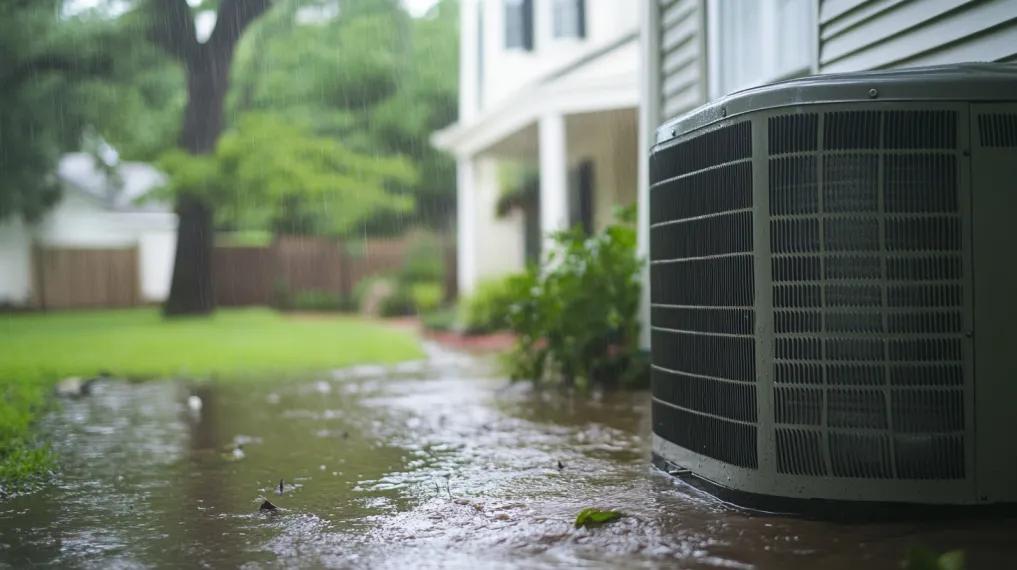What to Do If Your HVAC System Floods

Significant flooding events, like communities across the Southeast faced after Hurricane Helene, are often catastrophic, leading to a loss of life and causing devastating damage to homes, businesses, and infrastructure.
If you’ve recently returned to a home affected by floodwaters, one of your primary concerns may be whether it’s safe to use your HVAC system or if it requires repairs or replacement. HVAC.com outlines how flooding impacts heating and cooling systems and the necessary steps homeowners should take before restarting their units.
Why Flooding Damages HVAC Systems
Flooding can damage both indoor and outdoor HVAC components due to the dirty water and debris that can infiltrate and clog vital components. When water from flooding enters an HVAC unit, it can introduce contaminants like dirt, grime, debris and chemicals, which can damage delicate electronic parts and mechanical systems. This exposure can lead to corrosion, mechanical failures, and electrical damage, especially if the system was running when it flooded.
Turning on an HVAC system after a flood can pose serious safety risks due to potential electrical issues. Water exposure can damage wiring and components, creating the risk of electrical shocks or fires if the system is powered on without proper inspection and repairs.
Impact on Outdoor Units
Outdoor HVAC units – primarily heat pump and air conditioner condensers – are particularly vulnerable during flooding because they’re usually located on the ground next to homes. They can become completely submerged for long periods of time, especially in severe cases like Hurricane Helene, which caused widespread damage to communities across Florida, Georgia, the Carolinas, and Tennessee in September 2024.
When water accumulates around the condenser, crucial components such as the compressor, fan motor, and electrical connections can suffer damage. Refrigerant lines can also become damaged, especially if the outdoor unit shifted or moved during the flooding. Water can also cause rust and corrosion, leading to costly repairs or even complete system failure. During severe flooding, the entire outdoor unit may need to be replaced.
Impact on Indoor Units
While indoor units (furnaces, air handlers, and boilers) may seem protected, they too can become partially submerged in water, especially if located in a basement that receives significant flooding.
Components like the evaporator coil, blower motor, and electronic controls can all be affected. In some cases, water damage may lead to extensive repairs or replacement, especially if the unit was submerged for an extended period.
Impact on Air Ducts
Flooding can also severely damage air ducts, particularly if they are made of porous materials like fiberglass. Water exposure can cause corrosion, mold growth, and structural weakening. Ductwork that has been submerged or significantly damaged may need to be completely replaced.
What to Do if Your HVAC System Floods
If your home was recently flooded due to Hurricane Helene or another natural disaster, don’t turn the system on to prevent electrical hazards or further damage to the unit. Instead, shut off the power to your HVAC system at the circuit breaker. There are usually separate breakers for the outside and inside units.
Next, contact an HVAC professional to thoroughly inspect the entire system, including the ductwork, to determine the extent of damage and determine the best course of action. Factors to consider when deciding whether to repair or replace your system include the extent of the water damage, the age of the unit, and the cost of repairs versus replacement.
If you own an older system and some of the components are damaged, replacement may be the more cost-effective option in the long run. If the damage is minimal and the unit is relatively new, repair could be feasible.
Tips to Protect Your HVAC System from Flooding
Preparing your HVAC system for storm-related flooding can help limit damage caused by flooding from hurricanes and storms. If you have an outdoor unit, consider placing it on a raised platform or using concrete blocks to keep it above potential flood levels.
Before a storm hits, consider turning off your HVAC system at the circuit breaker. This helps protect the electrical components from water damage.
After the storm, inspect your system for any signs of damage or debris before turning it back on. If the storm produced flooding or you notice any issues with your HVAC unit, contact a professional.